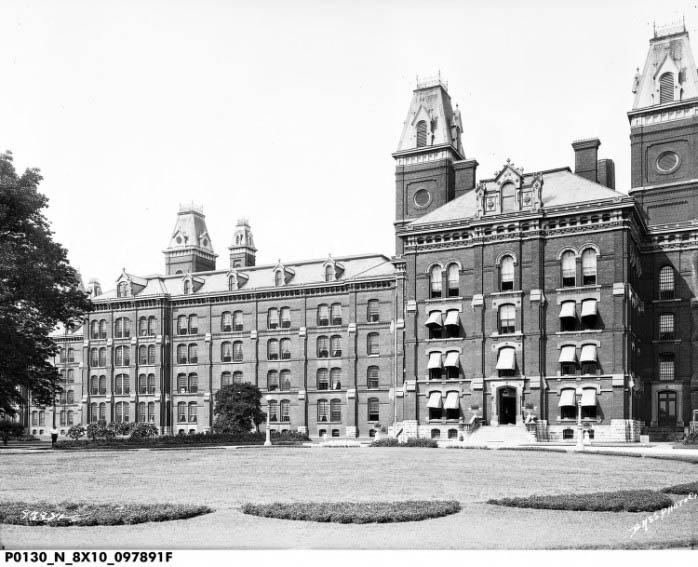Written by Derek Naber
In the late 1800’s, a physician named Dr. Thomas Kirkbride, through the urging of psychiatric care reformer Dorothea Dix, created a plan for large-scale campuses for state mental hospitals. Soon, state-owned +100-acre psychiatric campuses started to grow all over the country. In the nineteenth and twentieth centuries, more than 250 institutions were built in the US, which housed more than half a million patients.
Fast forward to the new century, where rising costs, new drugs, and community-based care has forced many states to close down their respective hospitals and abandon their expansive campuses. The closure of these hospitals has left huge development gaps within cities and hurt their respective adjacent neighborhoods. As states and communities began to look at reuse alternatives, new development trends including urban redevelopment and new urbanism began to drive people to consider building mixed-use villages featuring a blend of commercial, residential, and public uses.
There are many studies and precedent information on how to manage a variety of urban redevelopment projects, including former industrial sites, strip centers, parking lots, old historical buildings, military bases, etc. With that said, the reuse and redevelopment of former psychiatric hospitals has gotten little to no coverage, with the exception of “ghost hunters” :).
When researching what progress has been made at abandoned mental hospitals, I found that majority of closed hospitals are still sitting vacant and underutilized However, some communities are finding successful reuses, including Traverse City, Michigan (link) and Washington D.C. (link).
Here in Indianapolis, the 150-acre psychiatric campus at Central State (established in 1880’s) was closed in 1994 and was sold ten years later to the City of Indianapolis in 2004. In 2007, the master development planning process began and, to date, over $60 Million in public, private, and non-profit investment has been made. This has resulted in built and planned mixed-use developments: a charter school, track and field, new roads and infrastructure, a multi-family housing development, and a new senior living facility. The site, renamed to Central Greens (and now called Central State as of 2019), is focused on leveraging high-quality open spaces with high-quality urban development.
Since 2007, Central Greens has had a unique set of redevelopment challenges including unusable buildings, botched demolitions, lack of usable utilities, environmental problems, and unmarked burial sites. Further, there are unique marketing challenges relating to overcoming “haunted” or “spooky” associations with the property. With that said, there have been several key development philosophies that we have utilized to achieve success thus far:
- Be Patient — Over 20 years has gone by since Central State was first closed and only 50 out of the 150 acres have been redeveloped.
- Be Flexible — The master plan should never be “set in stone”. You never know if a better proposal may come along.
- Leverage Existing Assets — Emphasize unique site opportunities including location, architecture, and mature trees in order to pitch prospects and encourage investment.
- Municipal & Community Support — New infrastructure investment and community support is needed in order to encourage private investment.
Finally, at Holladay, we are working on new project proposals that will continue to build off of the successes at Central Greens!
Stay tuned for more from our excited redevelopment experiences!

